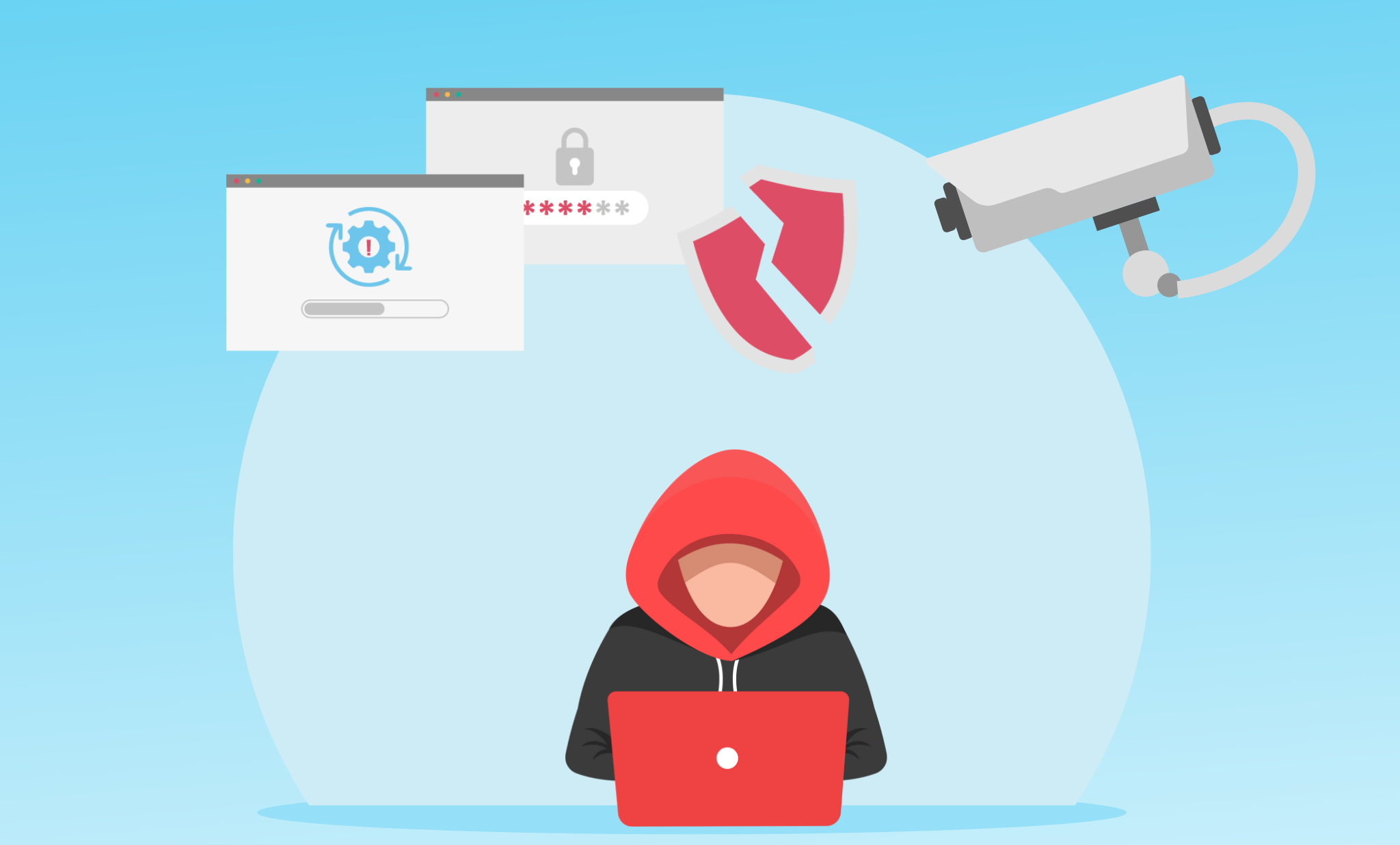
In recent years, physical security systems – once the domain of on-site monitoring and management – have become deeply intertwined with the digital world. Cameras, access controls, and other physical security devices are now connected to corporate networks, providing efficiency, convenience, real-time monitoring, and analytics that were once out of reach. But with these benefits comes a critical drawback: as these devices go online, they also become vulnerable to cyber-attacks.
The recent discovery of hackers actively trying to exploit zero-day vulnerability in PTZ (Pan-Tilt-Zoom) cameras highlights just how real and pressing these risks are. A zero-day exploit means attackers have found a critical vulnerability in a device that the manufacturer hasn’t yet patched, leaving it defenseless and open to exploitation. In this case, attackers could hijack a camera, scan networks for other vulnerabilities, or simply disable the device. More alarmingly still, the vulnerable cameras in question were deployed in a variety of sensitive industries, including healthcare centers, government institutions, and courtrooms.
Of course, the implications of such vulnerabilities are huge for any organization, and they signal a clear message: physical security and cybersecurity are no longer separate domains. Securing physical devices requires a proactive approach that mirrors best practices in cybersecurity – a fact underlined by last year’s “National Cybersecurity Strategy” document released by the US government, which focuses unprecedented attention on IoT devices.
Understanding the Risks
Physical security devices such as cameras, access control systems, and alarm systems are now often connected to the same networks as other critical IT infrastructure, making them attractive targets for hackers. As a result, vulnerabilities in physical security devices pose a major threat, leading to issues ranging from compromised physical security infrastructure to unauthorized access and data breaches – which can in turn result in financial losses, reputational damage, and more.
A zero-day vulnerability in PTZ cameras – discovered just a few months ago – is a prime example of this threat. A “zero-day” exploit refers to a security flaw that is unknown to the software’s creators until the moment it is exploited, leaving the device vulnerable to attack until a patch is developed and deployed. In the case of networked security devices, attackers can gain real-time access to video feeds, use cameras to scan for network vulnerabilities, and even disable the devices altogether.
Best Practices for Securing Physical Security Devices
Fortunately, there are many measures that can be taken to protect physical security devices from cyber attacks such as these. To be sure, securing these devices requires a proactive approach that combines robust network management, continuous monitoring, and policy-driven practices. However, with the right tools and efficient collaboration between physical security and IT/network teams, this approach is within reach – even for the largest and most complex physical security device fleets.
Here are just a few such areas organizations should focus on to defend against these kinds of critical vulnerabilities.
1. Regular Firmware and Software Updates
Device manufacturers release updates and patches to address known vulnerabilities. This is perhaps the most fundamental place to start cyber-protecting your devices. However, in many organizations, firmware updates can be overlooked due to the sheer number and variety of devices. In fact, studies show that as many as 70% of devices in the average physical security device fleet are running outdated firmware. Regularly scheduled updates are essential to ensure that devices are protected against the latest threats.
2. Device Network Segmentation
Physical security devices should ideally be on a separate network from critical IT systems. Network segmentation limits the exposure of devices to potential attackers, isolating them from more sensitive data and systems. Implementing VLANs (Virtual Local Area Networks) and firewalls can help contain any unauthorized access and minimize the impact of a breached device.
3. Enforce Strong Password Policies
Default passwords are one of the most common weak points in physical security devices – and IoT devices, more generally. In fact, many cyber incidents involve attackers exploiting default or weak credentials. Enforcing strong passwords and regularly updating them can significantly reduce the risk of unauthorized access.
4. Continuous Monitoring and Real-Time Alerts
Real-time monitoring is crucial for identifying unusual activity, failed login attempts, or other signs of a potential breach. Utilizing tools that can issue smart alerts in real-time allows for rapid response, allowing security teams to address issues before they escalate. When properly integrated with an IT ticketing system, like ServiceNow, smart alerts can streamline the incident response process, ensuring that critical issues are prioritized and handled promptly.
5. Routine Device Audits and Vulnerability Assessments
Regular audits and vulnerability assessments can help organizations avoid potential threats by identifying gaps in security controls. These assessments should cover both hardware and software vulnerabilities and evaluate the effectiveness of security configurations. For example, scanning for open ports or outdated firmware versions can highlight vulnerabilities that require attention.
6. Automated Remediation for Improved Efficiency
Cyber-attacks often require a rapid response. Automated solutions can help organizations respond faster and minimize the impact of threats. For example, automation can help with tasks like firmware upgrades, password rotations, device health monitoring, and implementing device hardening policies. By automating these activities, organizations can reduce human error, ensure that devices are always compliant with security policies, and increase the overall resilience of their security infrastructure.
7. Building a Culture of Security Collaboration
Securing physical security devices is not just about implementing the right technology; it’s also about fostering a culture of security and ensuring cross-departmental compliance. Educating staff on best practices, establishing clear protocols for device management, and ensuring communication and collaboration between IT and physical security teams are all essential steps in safeguarding physical security devices against evolving cyber threats.
Securing the Future
The recent zero-day vulnerability affecting PTZ cameras is just the latest reminder that physical security devices are not immune to cyber threats. As hackers become increasingly adept at exploiting security weaknesses in these systems, organizations must adopt proactive strategies to defend against them. From regular updates and network segmentation to continuous monitoring and automated remediation, these best practices can enhance the security of physical devices and minimize risks.
In a world where physical and cyber security are interconnected, organizations prioritizing device security can better protect their infrastructure, reduce the risk of cyber incidents, and provide a safer environment for their people and assets.
Download The Guide to Future-Proofing Your Physical Security for more on how to fortify your physical security devices against emerging threats.




